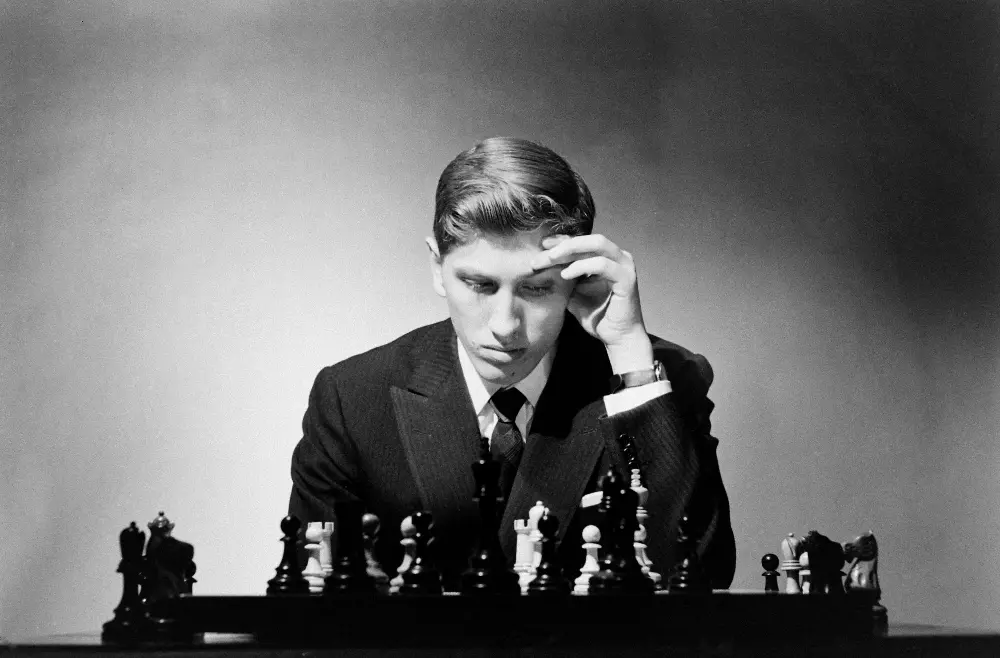The Brilliance of Bobby Fischer
June 2024 - Solved 391🧩 Times
This month’s historical puzzle takes us back to Argentina, 1960. A 17 year old Robert James Fischer was generating a growing buzz in the chess world with his sharp, dynamic style of play. He traveled to Mar Del Plata with a point to prove. Since the late 1940s, the Soviet Union had dominated the international stage, investing heavily into chess and winning world championship after world championship. Fischer, a promising young talent, was determined to show he had the ability to beat the best.
It was here, against Chilean champion Rene Letelier, that this crushing game transpired.
Welcome to The Brilliance of Bobby Fischer.

Bobby Fischer, 1962.
Born in Chicago, 1943, Bobby Fischer was an American chess grandmaster. He achieved fame that no other chess player has seen, not only through his untouchable level of play, but also as a result of his controversial character and the political balance of the world at the time. During his rise, the west and east were embroiled in a long cold war of ideology, and as Fischer took the championship in 1972, chess fever reached a crescendo around the world. He was viewed by many as a hero, a charismatic American symbol of how the individual could triumph over the collective. In stark contrast, his life would end as a fugitive, a troubled mind, and an outspoken critic of the US government.
Not only was Bobby Fischer one of the greatest chess players, he also invented several variants of chess that are incredibly popular today, such as Chess960, where the pieces on the bank rank begin in a randomized position, and increment chess, where the time each player has increases by an increment after each move played.
This game is a potent demonstration of the dangers of taking up too much space in the middle of the board early on, and the power that can be harnessed from using all your pieces in the attack.
Can you find the winning combination, as Fischer did in 1960?
a
8
b
c
d
e
f
g
h
8
7
7
6
6
5
5
4
4
3
3
2
2
a
1
b
c
d
e
f
g
h
1

SOLVED









a
8
b
c
d
e
f
g
h
8
7
7
6
6
5
5
4
4
3
3
2
2
a
1
b
c
d
e
f
g
h
1

SOLVED









Analysis